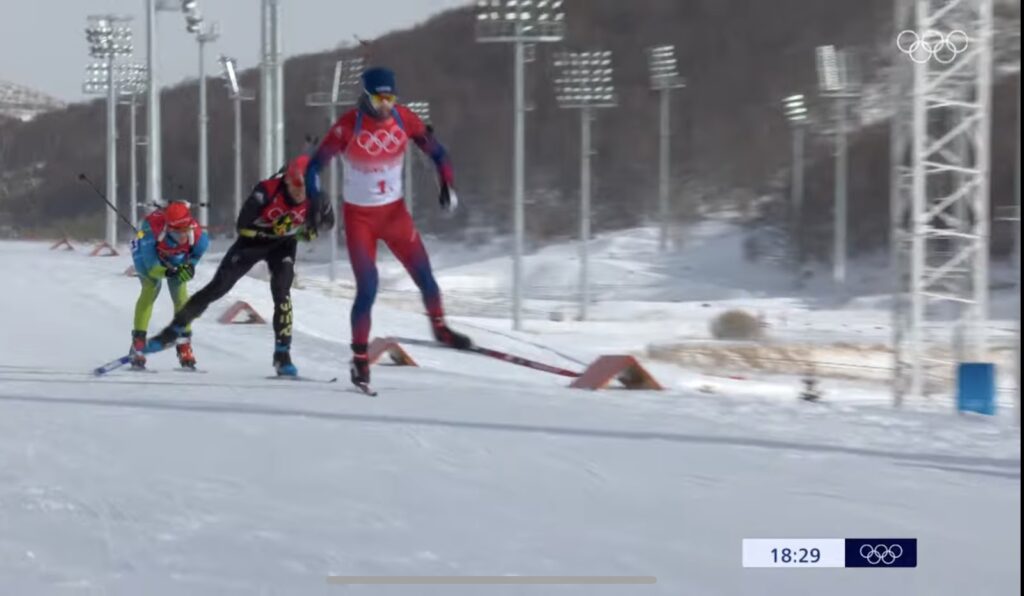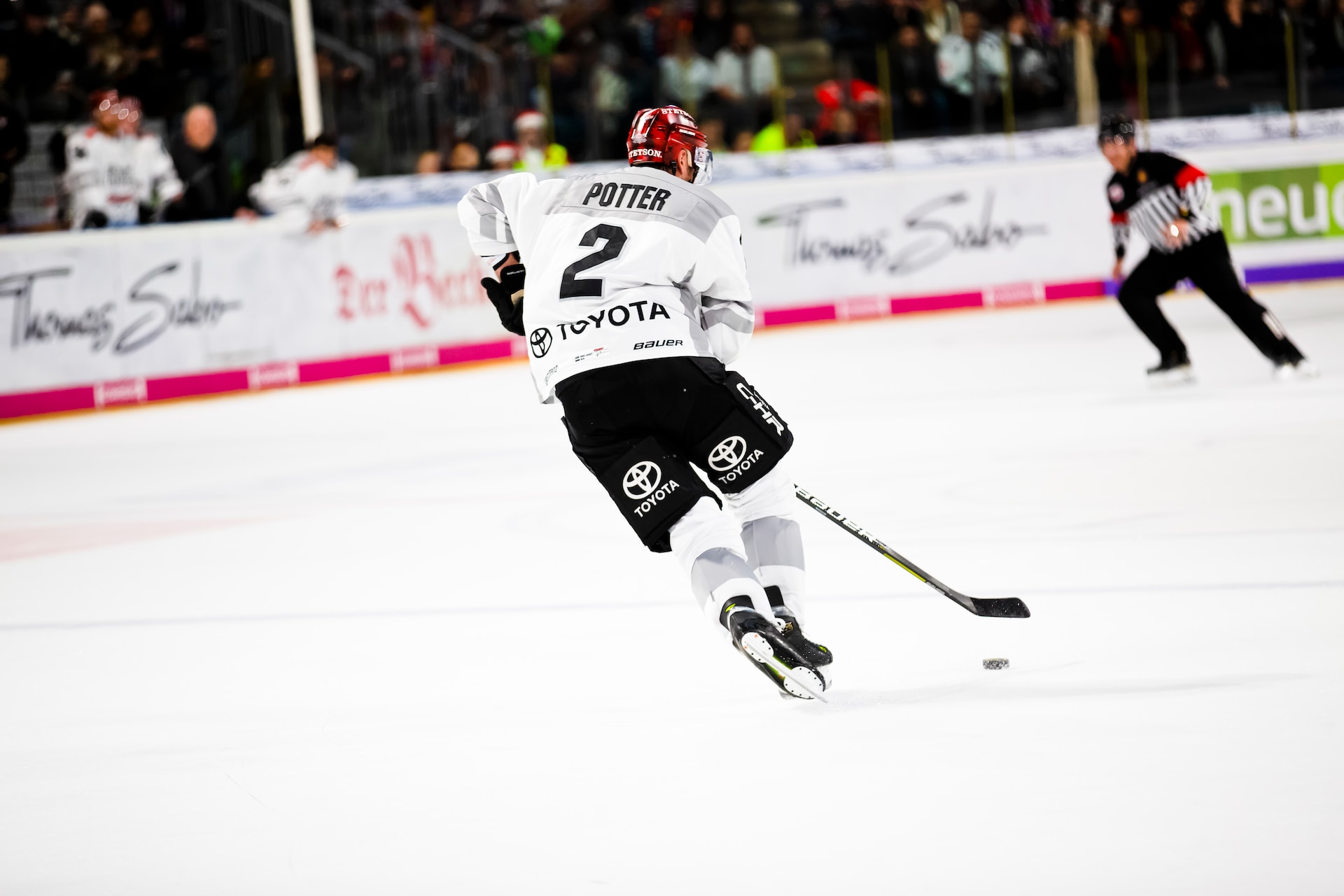In the world of sports, there exist disciplines that challenge the limits of human endurance, test the boundaries of precision, and embody the fascinating convergence of diverse skills. One such unique and captivating endeavor is the sport of biathlon. A fusion of skiing and target shooting, biathlon combines the grace of gliding across snow-covered landscapes with the concentration required for hitting bull’s-eyes from a distance. Beyond its captivating blend of athleticism and accuracy, biathlon carries a rich history that traces its origins back to survival, hunting, and warfare. It’s a tale of evolution that saw military ski competitions of the 1700s transform into the modern spectacle we know today.
As we delve into the intricacies of biathlon, this narrative aims to illuminate the various facets of this demanding sport. From the earliest military roots that shaped its trajectory, to the rigorous training regimes that transform athletes into elite competitors, each aspect contributes to the allure of biathlon. Through a journey that uncovers the mechanics of shooting accuracy, the intricacies of equipment, and the heights reached by the sport’s greatest athletes, we aim to paint a comprehensive portrait of biathlon’s captivating world. Join us as we traverse the snow-clad tracks and shooting ranges, unraveling the mysteries that have made biathlon a riveting and celebrated winter sport on the global stage.
What is Biathlon?
- The chronicles of biathlon unveil a captivating journey that bridges centuries, weaving together threads of history and athleticism. Events reminiscent of modern-day biathlon can be traced back to the 18th century, with the sport finding its initial form on the frost-covered battlefields of yore. However, it wasn’t until 1912 that the Norwegian military breathed life into what we recognize as the modern biathlon;
- Biathlon, an intricate amalgam of skiing and target shooting, stands as a testament to the human spirit’s relentless pursuit of challenges. Athletes traverse vast distances on skis, their every stride propelled by the fusion of precision and speed. Armed with rifles, they halt intermittently to engage in a bout of target shooting that demands unwavering focus;
- The essence of biathlon resides in its endurance component, where the course’s extension often stretches up to twenty kilometers. Mastery of this discipline necessitates not only impeccable skiing skills but also a runner’s tenacity and a Zen-like composure for precision shooting. As athletes embark on this arduous journey, they carry forward a legacy that harks back to survival, yet stands tall today as an exhilarating and uniquely demanding sport.
Historical Context and Evolution
Biathlon’s roots delve deep into the annals of history, where the practicalities of survival, the art of hunting, and the exigencies of warfare have collectively contributed to its emergence. As a canvas woven with threads of necessity and adaptability, biathlon’s inception finds its muse in the bygone eras of human struggle.
The notion of using skis as a tool for survival and sustenance fueled the concept of biathlon. In times when survival hinged on efficient hunting and agile maneuvering during conflicts, skis emerged as a trusted ally. This connection between skis and the ebb and flow of life’s challenges acted as the foundation upon which biathlon was built.
The origins of the sport can be traced back to the 18th-century military ski competitions, where the skills honed in hunting and conflict found an arena of competition and camaraderie. These early events laid the groundwork for the modern-day biathlon, encapsulating the essence of its evolution from a practical pursuit to a celebrated sport that marries the grace of skiing with the precision of shooting. Through the centuries, the echoes of those survival-driven roots have reverberated, transforming biathlon into a captivating symphony of athleticism and strategy.
Variations and Rules of Biathlon
Distinct biathlon events feature varying rules, including regular races, sprint races, and relays. Victory is secured by completing the lengthy race in the shortest time, with shooting accuracy carrying equal importance to speed. Competitors commence the race with rifles strapped to their backs, triggered by a referee’s command. The biathlon involves skiing and shooting stages alternately. Athletes must shoot targets from specified distances after skiing a particular distance, abiding by regulations like no shortcuts, no interference with fellow athletes, and skiing a penalty loop for missed shots.
Shooting Accuracy and Target Details
During shooting stages, participants fire at targets while standing in designated lanes. Rules dictate that athletes must shoot without external support and adhere to specific firearm handling guidelines. Targets consist of a 115 mm circle with a smaller 45 mm center. Hitting anywhere in the larger circle counts when standing, but a shot must strike the smaller center when lying prone.
Biathlon in the Olympics
The pinnacle of athletic achievement finds its zenith in the Olympic Games, and biathlon’s journey to Olympic status is no less intriguing. Since 1960, biathlon has proudly held a place on the Olympic stage, captivating audiences with its blend of skiing finesse and shooting precision. Although sporadic glimpses of biathlon graced the Games prior to 1960, it was in that pivotal year that the sport officially cemented its presence among the Olympic disciplines

- A telling narrative of biathlon’s dominance within the global arena lies in the hands of European nations. These winter sports powerhouses have, more often than not, claimed the lion’s share of biathlon medals. Their mastery over the sport stands as a testament to the fervor and dedication that courses through the veins of biathlon athletes from the European continent;
- While Europe reigns supreme, countries like Canada and Kazakhstan have defied the odds, leaving their indelible mark on the biathlon medal tally. Their victories underscore the sport’s universal appeal and its capacity to nurture talent beyond the traditional strongholds.
As biathlon continues to evolve, the Olympic Games remain the ultimate proving ground, showcasing the convergence of physical prowess and precision. With each biathlete’s glide and each trigger’s pull, the sport cements its legacy on the Olympic stage, captivating hearts and minds around the globe.
Duration of Biathlon Races
Given the lengthy course, only a handful of champions can complete a 20KM race in under 47 minutes. World championship competitors typically finish a little over 47 minutes, while the best Olympic performances take around 48 minutes.
Training for Biathlon
Achieving success in biathlon necessitates robust cardiovascular fitness, skiing proficiency, and shooting skills. Novices should focus on endurance, potentially mastering rapid skiing without excessive heart rate elevation. Adequate cardio conditioning and firearm expertise are crucial, alongside extensive skiing practice and possibly learning to shoot under elevated heart rates.
Biathlon Rifles
In the heart of biathlon’s rhythm lies an instrument that speaks softly yet carries immense power. Biathlon rifles, shrouded in an aura of subtlety, owe their quiet demeanor to the petite .22 long rifle cartridges they employ. These diminutive projectiles, while harboring the potential for lethality, exude minimal noise and recoil – a harmonious blend of accuracy and discretion.
Biathlon Athlete Gear and Equipment
Effective participation requires specialized gear, including racing suits, boots, and skis. Appropriate ankle-supporting ski boots are vital, and biathletes train with both traditional and skate skis to maximize skill. Proper rifle weight and ammunition compatibility are paramount. Warm clothing is essential, especially when lying down for shooting.
Greatest Biathlon Athletes
Ole Einar Bjørndalen stands as the preeminent male biathlon athlete, with a record-breaking medal haul in world cups and Winter Olympics. Meanwhile, Magdalena Forsberg holds the distinction among women, winning the world cup consecutively from 1997 to 2002.
Biathlon vs. Cross-Country Skiing
Biathlon and cross-country skiing emerge as distinct siblings in the realm of winter sports, each weaving a unique tapestry of athleticism and artistry.
- The glaring contrast lies in the union of skiing and shooting that defines biathlon. This remarkable synthesis challenges athletes to seamlessly transition from swift skiing to poised shooting, embodying the convergence of speed and precision;
- One hallmark that demarcates biathlon from its cross-country counterpart is the choice of skis. Biathletes exclusively employ skate skis, a choice dictated by the demands of rapid shifts between skiing and shooting stages. In contrast, cross-country skiing employs a blend of both classic and skate skis;
- While biathletes focus on honing their accuracy, cross-country skiers navigate gentler terrains that test their physical prowess and endurance.
The backdrop against which these two sports unfold further underscores their uniqueness. Biathlon resonates with history’s echoes, stemming from the realms of survival and warfare, while cross-country skiing’s tradition emerges as a testament to the unbreakable bond between humans and nature. Despite their differences, both biathlon and cross-country skiing kindle the spirit of competition and the pursuit of mastery, forever leaving their mark on the snowy landscapes they grace.
Comparison with Triathlon and Pentathlon
Triathlon and pentathlon differ significantly from biathlon, with the latter being a winter sport. Pentathlons encompass various skills and originated in ancient Greece, evolving into a modern version involving shooting, swimming, fencing, horse riding, and running. All three events have historical connections to warfare-related skills.
To wrap up
As we draw the curtain on our exploration of biathlon, the resonating echoes of this unique sport reverberate through time. From its humble origins on snow-covered battlefields to its present-day prominence on the international stage, biathlon’s journey is a testament to human adaptability, endurance, and precision. The marriage of skiing and shooting has given rise to a discipline that stands as a symbol of the synergy between physical prowess and mental acumen.
- Biathlon’s evolution from survival necessity to a meticulously crafted sport serves as a tribute to the perseverance of human athleticism. The training regimens, the skillful handling of rifles, and the mastery of skiing techniques are the building blocks that construct the edifice of biathlon. It is a sport where the culmination of hours, days, and years of hard work culminates in the flutter of a target hit and the thrill of crossing the finish line;
- The achievements of iconic figures like Ole Einar Bjørndalen and Magdalena Forsberg, who have etched their names in biathlon’s history with unparalleled feats, serve as a source of inspiration for aspiring athletes. Their dedication speaks volumes about the commitment and unwavering pursuit of excellence that define biathlon.
As we step away from the snow-laden landscapes and the tension-filled shooting ranges, let us remember that biathlon is more than just a sport; it is a testament to human tenacity, a showcase of precision under pressure, and an embodiment of the essence of competition. Through the ages, biathlon’s legacy will continue to inspire and captivate, forging a lasting bond between the thrill of the chase and the pursuit of accuracy, forever immortalized in the annals of athletic history.
